19 November, 2001
Dr. Steve Alexander, Dr. Sergei Korsun, and I left McMurdo this morning to
return to Explorers Cove. Dr. Neal Pollock's flight to New Zealand was
delayed until tomorrow. Upon our return to New Harbor, I noticed that the
ice near the transition zone had begun to melt. I could now see evidence of
the "salt water" marsh. On a walk around the cove, observations were made
for potential sites to collect hydrology (water) measurements. The beauty
of Antarctica never fails to surprise. Looking beyond the transition zone
(where land meets the sea), Mt. Erebus, the southern-most active volcano,
looked like a picture from a National Geographic magazine. It's hard to
capture the beauty (or maybe the way I feel) when I see Mt. Erebus. As I
walked along the coastline, an Adelie penguin sat "preening" itself on the
ice-covered pond. It didn't seem upset or fazed by my presence. It must
have felt protected by the "ice wall" at the transition zone, which
separated the penguin from me. As I stood quietly by and observed the
penguin against the backdrop of ice and snow-covered mountains, I felt the
presence of Antarctica. Whether friend or foe, Antarctica definitely has a
personality.
As I walked around the moat area, I could see evidence of pingos. Pingos
form when sediment and ice are pushed up by the frozen water beneath. As
the ice below melts, the "frozen mounds" create a depression which fill
with water. Looking at the melting ice to see the existence of a "marsh"
beneath made me wonder what organisms were in this cold water. What could
possibly exist here? What water conditions control life in this extreme
environment? It also makes me wonder if organisms living in Antarctica can
be found in waterways back home. Science is exciting because it not only
encourages questions, but it can also lead to investigations in order to
find the answers.
When I returned to the Jamesway, I began to prepare the science equipment
for the hydrology study. Dr. Korsun spent some time with me discussing
different types of forams. He has spent 15 years living in the Arctic
studying forams. He discussed different types of forams and showed me
pictures from his web page on this Arctic study of forams.
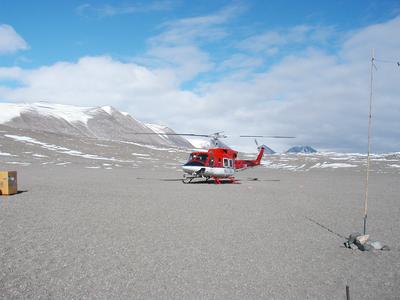
A Bell 212 helicopter brought me back to Explorers Cove after spending a couple of days in McMurdo.
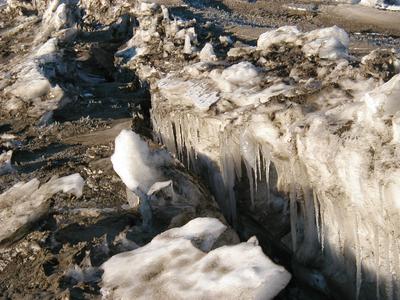
The icicles are quite beautiful in the transition zone at Explorers Cove.
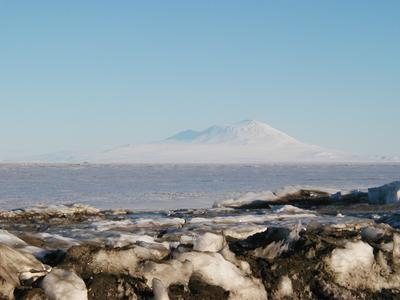
Mt. Erebus, the southern-most active volcano, is a welcome sight at my field camp each day.
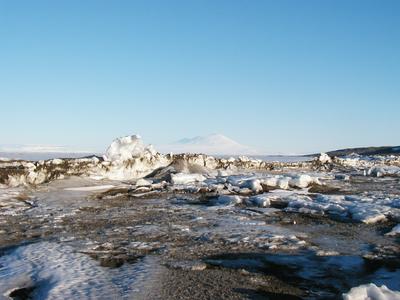
The "marsh" or moat area around our field camp is beginning to show extensive melting with each passing day. The temperature has varied, but when the wind doesn't blow, it is quite nice. We have had a couple of high temperatures around 30 degrees Fahrenheit.

Another view of the "marsh" area
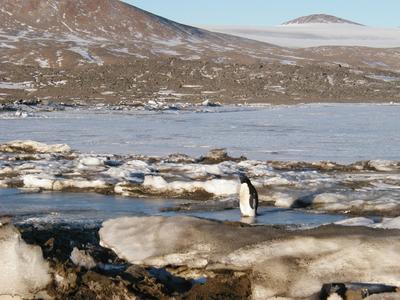
It was a surprise to see the Adelie penguin just beyond the transition zone.
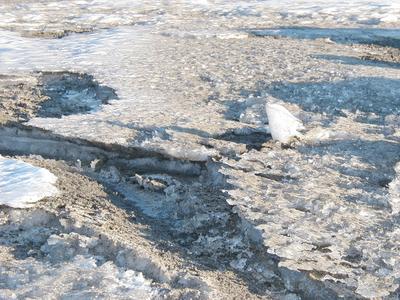
The ground around my field camp has patches of this beautiful ice. There are no flowers here, but the ice "growing" from the ground does quite well!
Contact the TEA in the field at
.
If you cannot connect through your browser, copy the
TEA's e-mail address in the "To:" line of
your favorite e-mail package.
|
